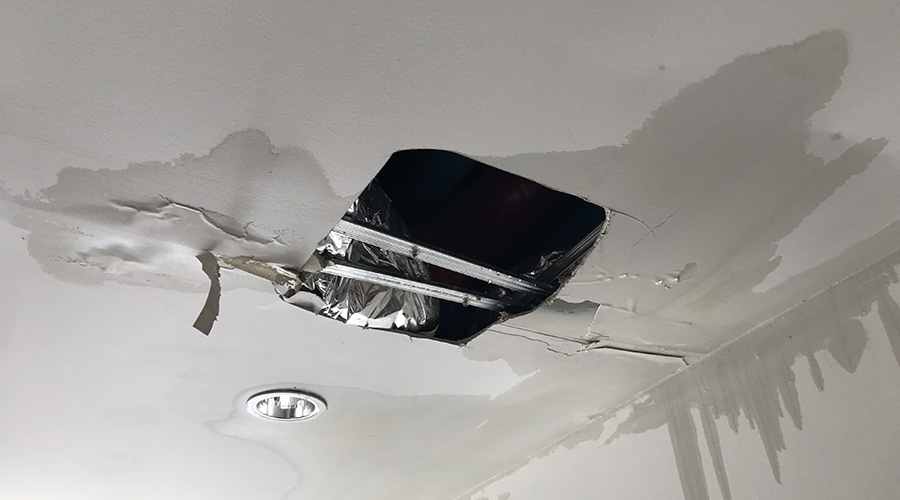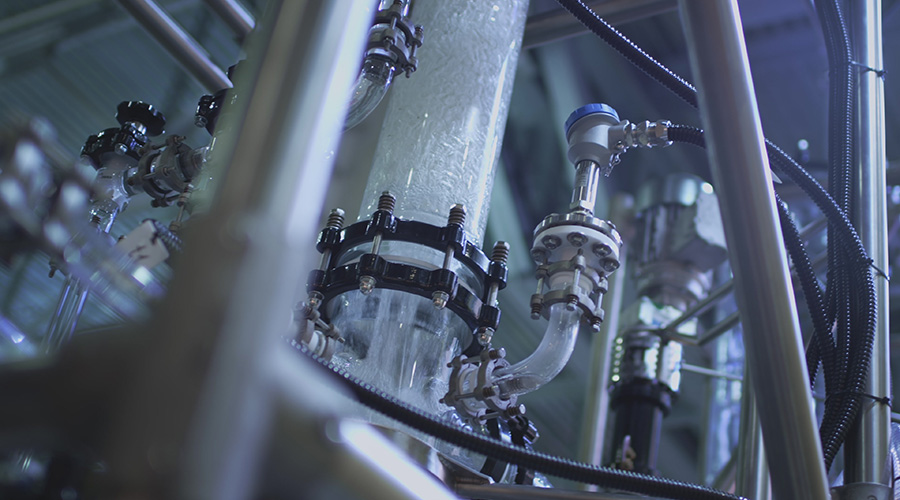Strategies and Tactics to Keep Pipes Flowing
Festus School District takes a three-pronged approach to reduce blockages and remove drain clogs quickly.
By Ronnie Wendt, contributing writing
Before the Festus School District in Missouri developed a three-pronged drain maintenance program, Maintenance Supervisor Tom Stegemann routinely called in a professional drain cleaning service to clear blocked drains. Today, the district keeps drains clear through regular inspections, preventive maintenance and drain clearing technology.
“If you want to test a product’s endurance and quality, put it in a school,” says Stegemann, who along with his team maintains seven school district buildings with 3,000 students and 400 staff members.
“We are charged with providing a clean, safe learning and work environment for students, teachers, administrators and support personnel,” he says. Clogged drains have always challenged the K-12 school system and complicated these efforts.
“There’s an enormous difference between drains in a school and, say, a hospital, church or car dealership,” Stegemann says. “We’ve had to clear everything from soda bottles to T-shirts to instant mashed potatoes from our drains.”
Clogged drain issues
In a busy commercial or school building, a blocked drain is not a small problem, and clogs happen in all areas, not just in bathrooms. In a school, blockages happen in grease traps in kitchens, toilets, urinals, sinks, drinking fountains, floor drains, roof drains and gutters.
“Our biggest issue was downtime,” Stegemann says. “A blocked drain in a building can affect more than one area, even multiple floors. Things can back up into floor drains, bathrooms, locker rooms and other areas where people are present throughout the day.”
Clogged drains can alter operations and make spaces unusable. The kitchen staff might not be able to wash dishes due to a blocked drain and might have to switch to serving food on paper plates. A clogged drain in the science room might require moving classes to the library. Then the library and science room are out of commission, and students and teachers are displaced.
Clearing clogged urinals, water coolers, hand and pot sinks, and disposal lines also takes facility maintenance technicians away from other tasks.
“Now they’re notifying affected populations about the problem, working to address the situation, and making phone calls to service companies to come out as soon as possible, which is often the next day,” Stegemann says.
A single drain clog also costs money in addition to downtime and disruption.
“Every time we called out a service company, it cost us between $300 and $600,” he says. “We had 12-15 challenging clogs a year to deal with. It’s a true benefit to purchase the equipment and learn to use it.”
Technology solutions
Like most maintenance managers, Stegemann sought a solution to clear clogged drains quickly and keep them free from clogs. He found the answer in two General Wire drain cleaning machines, a drain inspection tool and a rigorous maintenance program.
“I purchased two different machines, one with a larger, 50-foot-long cable for 3-inch to 10-inch drains, and the other with a thinner, 35-foot cable for smaller-sized drains,” he says.
Stegemann says his staff relies on the compact drain cleaner to unclog sinks, tubs and laundry drains in a range of applications. Weighing 30 pounds, the compact tool features a variable-speed power cable feed for maximum control feeding and retrieving cable at up to 16 feet per minute. A 4-foot guide tube means maintenance technicians never need to touch the cable to keep their hands and the job site clean and sanitary — an important consideration in schools.
They also use a larger tool to clear difficult obstructions in 3-inch to 10-inch drains. The field-proven machine can handle difficult clogs, even clearing tree roots from drains. It drives ¾-inch and 5/8-inch cables without needing adapters to switch between cable sizes.
Having two tools for different size jobs provides the reliability and flexibility a busy, school drain cleaning program demands.
“We need both tools,” Stegemann says. “I need the smaller line if I have a clogged sink. I need the bigger machine if I have a blocked sewer line.”
The tools also come with a variety of heads for different uses. Stegemann says one head might work better for a drain clogged by a T-shirt, while another might work best with hardened food products.
The two machines cost the district around $5,000, an expense that has more than paid for itself since the district bought the machines over six years ago.
“This year alone, I’ve used the big machine four times,” Stegemann says. “It would have cost $600 or more to have a service company clear the obstructions. I covered half of the cost in a single year.”
Reducing downtime also frees technicians for other work.
“For 80 percent of our clogs, it takes more time for us to load and transport the equipment to the building than it does to unclog the drain,” he says. “We now clear most clogs in 15 to 20 minutes.”
Another key part of the district’s drain cleaning program is its drain inspection equipment, Stegeman says. The drain inspection tool has a camera at the end of a long cable line that technicians feed into the pipe to get a clear image of the entire drain.
“It is great to go in and inspect the drains to see where we are at,” he says. “We have buildings that were built in the 1950s with cast iron drain lines, which can rust, become brittle and break over time.”
Designing a program
The third component of the district’s drain cleaning program is routine maintenance. Several times a year, the district brings in a company that uses drain cleaning products to remove organic matter from pipes.
“We also use a product that helps break down food waste in the kitchen,” he says. “Solid waste can accumulate in the drain even with disposal. This product breaks down these proteins and washes them away.”
Not all equipment, drain cleaning products and drain maintenance companies offer the same service, so Stegemann says managers need to do their due diligence when adding technology and not be swayed by the lowest price.
“You get what you pay for,” he says. “If you don’t spend the money, you are likely sacrificing quality, durability, and ease of use.” He also recommends researching a tool’s user friendliness and the training offered by the supplier.
“You need a product that’s easy to operate and move around to get the job done,” he says.
Stegemann also recommends looking for drain cleaning tools with straightforward designs. He says all technicians should need to operate the equipment is a user manual and basic instructions.
“The company should give you some tips and tricks on how to clear a drain, but experience is really the best teacher,” he says. “I show our technicians how to operate the equipment and use it safely and how to judge the machine by the noise it is making. Is it moving? Not moving? How is it moving? Are you holding it still and letting it work, or pushing it through the drain?”
Managers also should choose equipment that operates quietly because building occupants need quiet environments to work or to learn.
“Noise has been an issue with other equipment we have used,” he says. “We need equipment that operates quietly and effectively reduces the disruption to normal school activities. We have used our drain clearing tools in quiet classrooms and busy cafeterias around lunchtime without disrupting activities.”
While technology can save money, Stegemann says investing in drain cleaning tools might be more than some maintenance operations need. A small office building with one or two clogs a year might not need advanced technology to clear drains. But the considerations are different for larger operations with multiple buildings and seven to 12 clogs annually.
“It’s money in the bank to purchase the equipment and learn how to use it,” he says.
Ronnie Wendt is a freelance writer from Waukesha, Wisconsin.
Related Topics:












